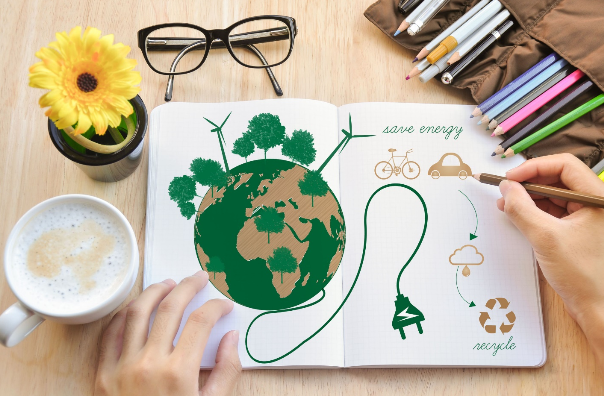 |
||||
|
13 Ways to Reduce Your Carbon Footprint
Reduce, reuse, recycle. Weíre all familiar with this mantra by now. But are you really doing all you can to preserve our planet? Truthfully, most of us probably could do a little more. While there are some people who are fine with going off the grid and living only on the food from their own gardens, that isnít the lifestyle most of us would choose. However, there are some really simple things you can do to reduce your carbon footprint and leave our Earth in good shape for generations to come no matter where you live. You can make most of these small changes without significantly altering your lifestyleóso why not give them a try?

1. Recycle as much as possible. Most cities offer recycle waste bins for households and most towns have separate trash and recycle receptacles. Try to only buy products that have minimal/recyclable packaging, and then be sure to actually recycle them. 2. Consider installing solar panels on your home to reduce the amount of energy you use. Youíll reduce not only your energy consumption, but also your monthly utility bills. 3. Support green companies. There are several companies doing important work to help our planet. Rothyís is a shoe company that uses recycled water bottles to make their loafers and flats for some eco-chic fashion. Ikea, the Swedish home goods store, sources 50% of their wood for furniture from sustainable forests and powers their stores with solar panels. By purchasing from green companies, you are supporting their efforts and sinking your money into eco-friendly manufacturers. 4. Drive less. If youíre able to walk to the grocery store or your friendís house, make a point of doing so. Invest in a Fitbit to make it more interesting, and you might be surprised by how motivating step-counting can be. If work is only a few miles away, leave your car at home and try riding your bike instead. 5. Carpool when you can. If youíre a commuter, you spend a lot of time sitting in traffic. Imagine if everyone carpooled with at least one other person. You could reduce the number of cars on the road and their emissions by half. Bonus if you can find 3-4 people to commute with. If carpooling isnít possible, look into public transit. Most big cities offer commuter trains and buses. The fewer cars on the road, the better the air quality is for all of us. 6. Use less water. Simply shaving a minute or two off of your daily showers, watering your yard less often, using low flow faucets, and investing in water efficient washing machines, can make a major difference. Water is precious; we need to conserve it where we can. 7. Shop at thrift stores. Many of the items youíll find there have lots of life left and can be reused. Less demand for new clothing and home items reduces the quantity of new products manufacturers need to produce and transport. This means fewer emissions from factories and trucks. 8. Buy an electric car. Most of us canít go completely car-free, but we can buy cars that are better for our environment. If you canít go full electric (they are pricey initially), consider a hybrid or a low emissions vehicle. 9. Unclutter your room and donate. Pack up the items that are collecting dust in your home and donate them to charity. Never just toss out perfectly good items because they no longer suit youóthe landfills are full enough already. You know how the saying goes: one manís trash is another manís treasure. 10. Buy from your local farmers. They generally use fewer pesticides and definitely require less transportation to get their goods to you. Visit farmers markets, fruit stands, and local green restaurants to find high-quality, organic food. Be sure to have reusable grocery bags on hand so you donít send even more plastic bags to the landfills.

11. Switch to LED light bulbs. They are super energy efficient and last a lot longer than standard light bulbs. 12. Unplug your small appliances and electronics when you arenít using them. Electronic standby power may seem minimal, but it adds up over time, and every little bit helps. 13. Keep your thermostat at an average temperature. Avoid setting it too high or low and use alternative ways to keep warm or cool instead. A sweatshirt or extra blanket in the winter, and a fan or two in the summer should do the trick. Youíll save energy and wonít dread your energy bills quite so much in the extreme weather months. There you have it, a few really simple ways to get started on a new greener lifestyle. These are all easy to integrate into your everyday life, so get cracking!
|
|
|||
|
|
||||
|
|
||||
 |
|
 |
||